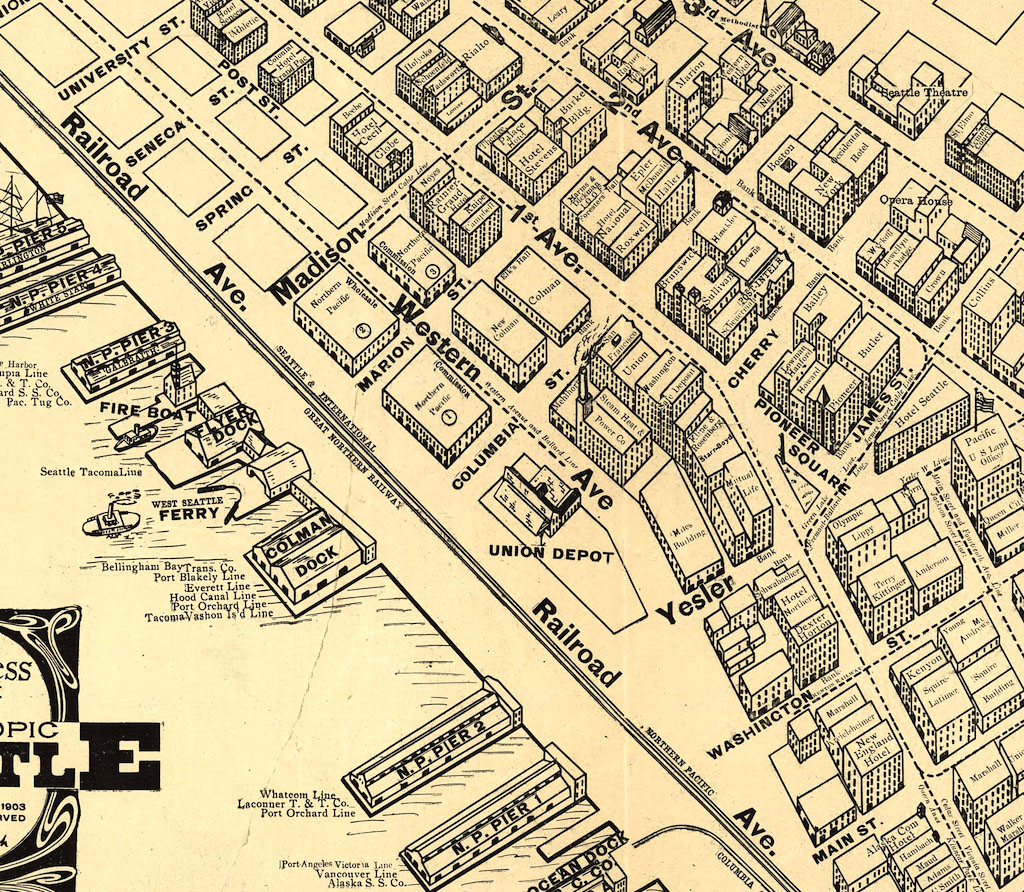-
The Windward
Columbia Street and Western Avenue
Columbia Street, between Alaskan Way and Western Ave
As Seattle grew, port facilities stretched to the north, along the bluff, resting on pilings that elevated the buildings and piers above the beach. To make space for railroads, essential for the movement of natural resources like coal and lumber from the interior to the waterfront, a series of trestles were built parallel to the shore. Unable to snake their way around the chaotic development on the shoreline, the tracks overrode earlier infrastructure, including the Windward.
Originally an ocean-going bark, the Windward had come to an ignominious end, sinking just off the shore of Bainbridge Island. In the 1870s, James Colman, who was developing the shoreline at the foot of Columbia, towed the remains of the ship and anchored it just offshore, which was then between today’s Western Avenue and Alaskan Way, and anchored it there as a breakwater to reduce wave action. According to journalist J. Willis Sayre, local kids used it as a swimming pier.
When workers built a trestle for the Seattle, Lake Shore & Eastern Railroad, they came upon the Windward’s hulk, drove their piles through its hull, and continued on. Popular lore holds that the ship remains buried under fill just north of Columbia, east of Western Avenue.





